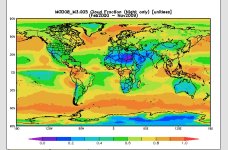tenex
reality-based
So, as I previously said, all you/we know is that some serial numbers 801xxx still had the old coatings, while all the reports of new coatings have 82xxxx. That doesn't tell us exactly where the change occurred (how far before or after 820000), or document the kind of gap in S/Ns that you claimed here:The serial #s are based on my experience comparing an 801xxx model to the 100th Anniversary Edition model side by side, and seeing the noticeable differences, and then reading about other's experience with their upgraded E2s and asking them the serial numbers in PMs if they didn't mention it in their posts, and them reporting their upgraded versions had serial #s with 82x.
So for a third time now you oblige me to ask: where is the evidence of any such deliberate serial number change/gap in any of these cases involving glass types or coatings in any model? It's a small point, but I'm still curious whether real or invented.I suspect Nikon changed to lead-free glass in the 8x32 SE 550xxx because of the change in serial #s.
Previous 8x32 SE numbering went from 500-505. Just as Nikon changed the AR coatings (and perhaps glass) in the 8x30 E2 starting with 82xxxx and 020xxx with the 10x35 E2, it makes sense they would make a serial number change with the Eco-Glass 8x32 SE.
Last edited:









